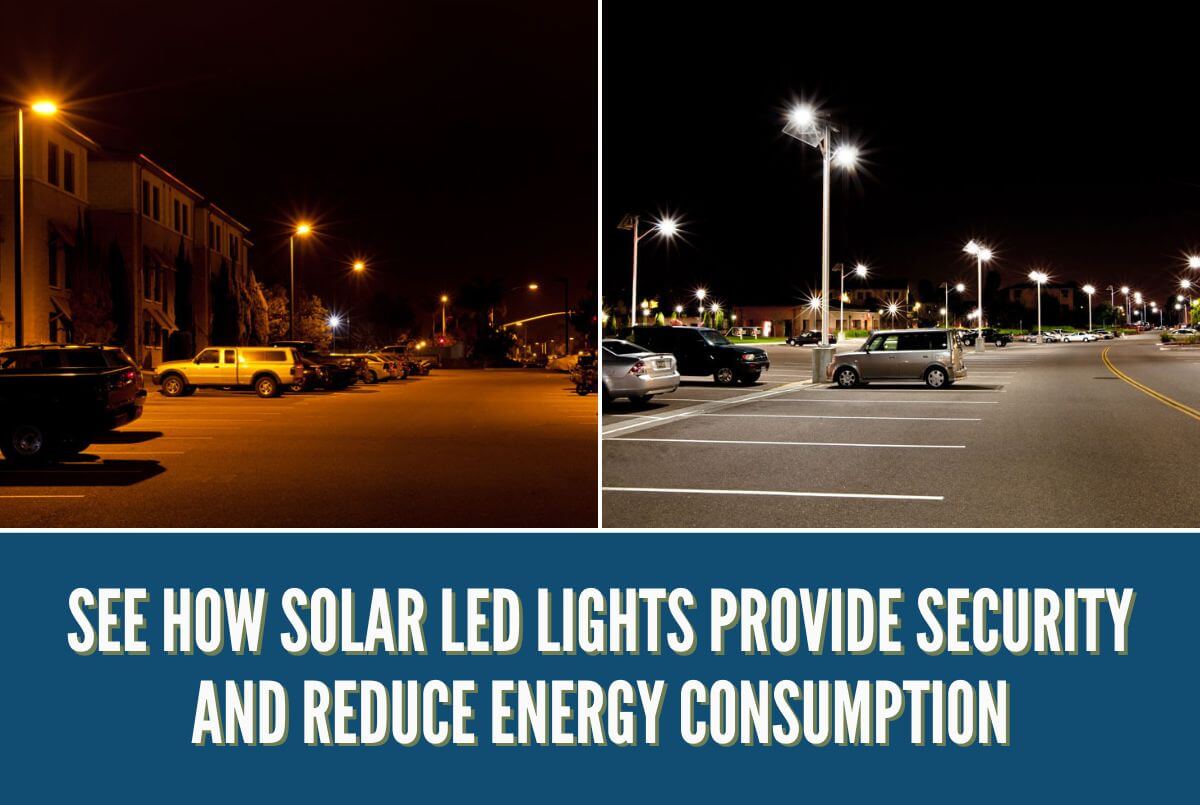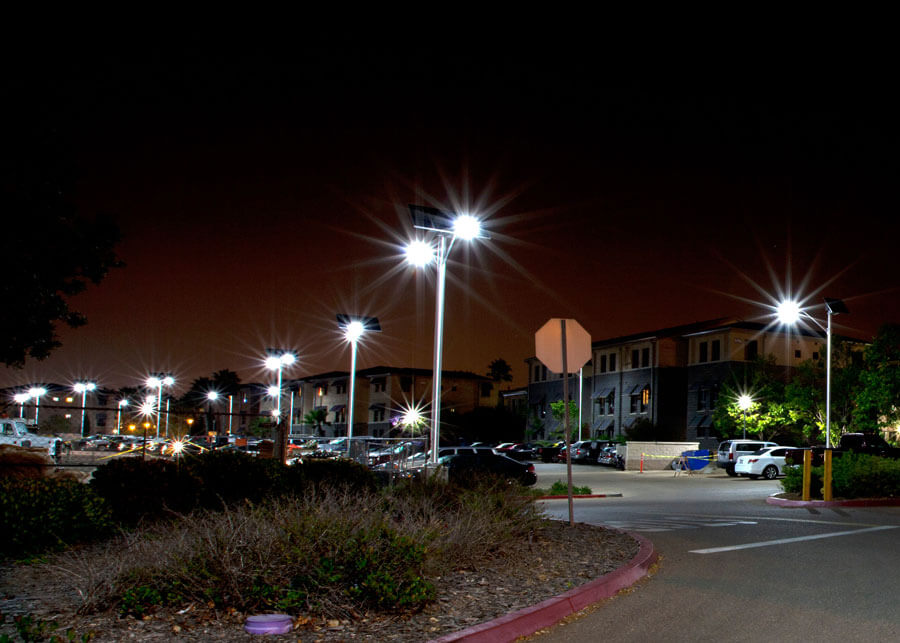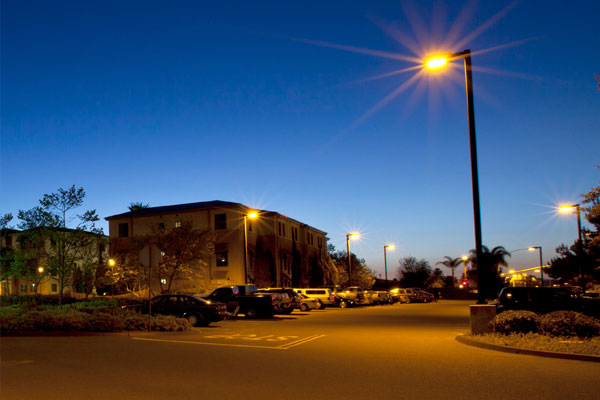


One of the most significant contributors to our energy usage is lighting. Households use around 6% of their energy for lighting, manufacturing and commercial use about 6-17% for lighting, and cities and municipalities can spend upwards of 25-50% for lighting on their municipal energy bills. Most lighting installations in the past have used high-pressure sodium lamps; however, these lamps produce a yellowish light that does not allow for good visibility. They also use a ton more power and discharge more heat than LED fixtures. This old-style lighting can be upgraded in two ways, using an LED fixture and installing a solar lighting system. Let's take a deeper look at both options.
LED lights provide a whiter and more natural light to provide better lighting overall, and even though they look brighter than HPS lamps, they use far less energy than these old lamps. This reduction in power consumption equates to an immediate savings by making this simple swith.
The US Department of Transportation recently did a study in July 2014, Maximizing Pedestrians’ Perception of Safety Using Light Source Spectrum, that reviews the differences between the old style HPS lamps and the new LED light sources. The study shows how pedestrians perceive lighting in urban and suburban areas that need to walk along the roadways at night. They found that people felt safer and more secure when the LED light sources were used even though the light levels were reduced from the old HPS lamps.

As roadway lighting accounts for 59 billion kilowatt hours of electricity per year, switching to LEDs can save upwards of 30% of energy on just the lighting of our roads. If they are connected to the grid, just switching to a lower-powered LED fixture can be the best step to lower the power used for lighting.
Also, by switching to a directional fixture, you can reduce the impact on the night sky by lowering the amount of light pollution. Light pollution impacts the natural environment by changing the migration patterns of birds, wake-sleep habits, and habitat formation. Instead, ensuring the new fixtures are dark-sky certified will guarantee you reduce the impact of the lighting on nature.
If grid power doesn’t exist and you need to illuminate an area, using solar LED lights would be the next logical step. Solar doesn’t require access to grid power to provide the required lighting, making it an obvious choice over trenching in traditional power. Solar lights also don’t add to the electrical grid usage for lighting, reducing the power consumption of the US.
Another way solar LED lights can be used to increase security and save energy is by replacing existing lighting infrastructure with off-grid solar LED lights. Once your existing systems require replacement due to end of life, upgrading to a solar lighting system would be a great choice. Although the upfront costs for these systems might be higher than just upgrading current fixtures and poles, the long-term savings and benefits can far outweigh the initial expense. Solar lighting systems come with lower maintenance needs and zero energy costs over their lifetime, protecting you from the continually increasing energy prices of traditional power sources. The ROI is not as quick on projects like this; however, within 5-10 years, the lights will pay for themselves.

Off-grid solar lighting is not always the best option for a project installation due to costs or other factors that affect the project. Adding solar panels to the light poles as they have done in New Jersey would also work to reduce our power consumption while increasing our energy efficiency all over.
This type of installation is considered NETZero if you are able to completely offset your average energy usage. NETZero takes your average usage and installs enough solar to feed the grid and is what is most commonly used with home solar installations. While solar power continues to grow, a move toward solar LED lights will increase safety and security while providing a zero-energy option for new installations, not adding to our already extended use of grid power.
Ultimately, switching to LED lighting will reduce our power consumption and provide additional safety and security to pedestrians and drivers. In addition, increased visibility is always great; LED lights will provide the needed lighting levels to do so. A solar LED lighting system can take you to that last step to completely eliminate the power requirement from the grid.
